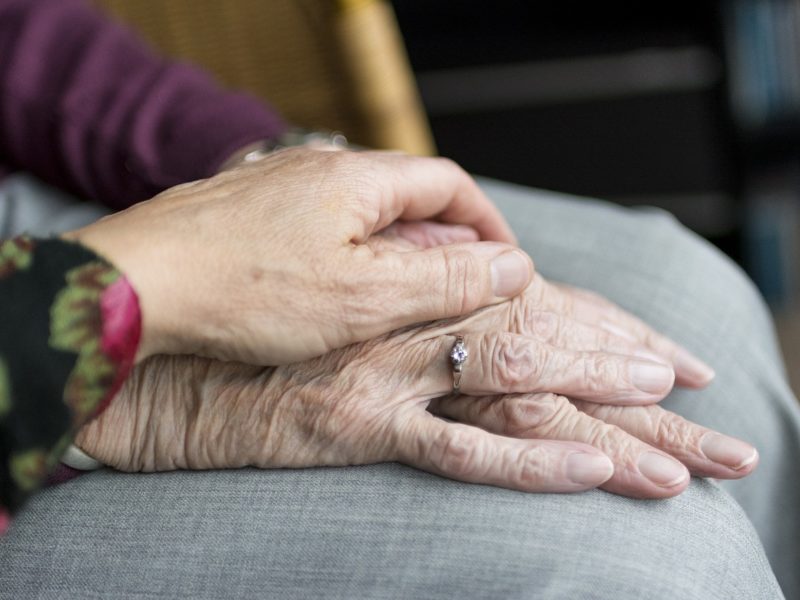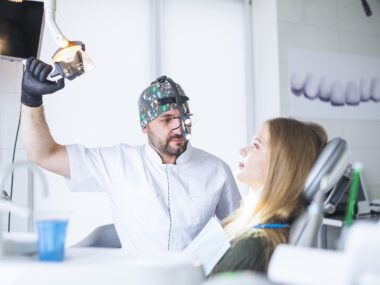Parkinson’s disease (PD) is a progressive neurological disorder that affects movement control. The condition was named after Dr. James Parkinson, who first described it in 1817. PD is characterized by the gradual degeneration of certain brain cells, particularly those that produce the neurotransmitter dopamine. This neurotransmitter plays a crucial role in coordinating smooth and controlled movements.
As Parkinson’s progresses, individuals may experience a range of motor and non-motor symptoms that can significantly impact their daily lives.
The exact cause of this disease is unknown but studies have shown that there are some factors which could contribute to the development and progression of the condition.
Risk factors of Parkinson’s disease
- Genetics: Some cases of PD have a genetic component, with specific gene mutations identified as risk factors.
- Advancing age is a primary risk factor for PD, with the majority of cases diagnosed in individuals over the age of 60.
- Exposure to certain environmental toxins, such as pesticides and herbicides, has been suggested as a potential risk factor.
- Gender: Men are generally more likely to develop Parkinson’s than women.
Clinical Manifestations of Parkinson’s disease
Motor Symptoms
- Tremors: Resting tremors, typically observed in the hands, fingers, or other extremities, are a common early sign of PD.
- Bradykinesia: Slowness of movement, making everyday activities more challenging.
- Postural Instability: Impaired balance and coordination, increasing the risk of falls.
- Muscle Rigidity: Stiffness in muscles, affecting flexibility and causing discomfort.
Non-Motor Symptoms:
- Cognitive Changes: Some individuals with PD may experience cognitive decline, including memory and concentration issues.
- Sleep Disturbances: Insomnia, restless leg syndrome, and other sleep disturbances are common in Parkinson’s patients.
- Mood Disorders: Depression, anxiety, and apathy are prevalent non-motor symptoms.
- Autonomic Dysfunction: PD can affect autonomic functions, leading to issues like orthostatic hypotension and constipation.
Steps towards proper diagnosis and staging of the disease
- Clinical Assessment: A neurologist assesses symptoms, medical history, and conducts a physical examination.
- Imaging Studies: Brain imaging, such as MRI or CT scans, may be used to rule out other conditions.
- Dopamine Transporter Imaging: SPECT or PET scans can evaluate dopamine levels in the brain.
Treatment or Management Strategies
While there is currently no cure for Parkinson’s disease, several treatment options aim to alleviate symptoms and enhance quality of life:
- Medications: Levodopa, a precursor to dopamine, is a common medication to replenish dopamine levels. Other drugs help manage symptoms and improve quality of life.
- Deep Brain Stimulation (DBS): In advanced cases, DBS involves implanting electrodes in specific brain regions to regulate abnormal impulses.
- Physical and Occupational Therapy: Exercise and rehabilitation programs can enhance mobility, flexibility, and overall function.
- Speech and Swallowing Therapy: Therapies focused on maintaining communication and managing swallowing difficulties.
There have been some researches in recent years which promise hope and give future perspectives on the possibility of getting treatment for this condition. These may include;
Disease-Modifying Therapies: Researchers are actively exploring treatments that may slow or halt the progression of Parkinson’s disease.
Genetic and Biomarker Research: Understanding the genetic basis and identifying reliable biomarkers could lead to early diagnosis and more targeted treatments.
Coping Strategies and Support for Individuals with Parkinson’s disease
Patient and Caregiver Support Groups: These provide emotional support and valuable insights into managing the challenges of living with Parkinson’s disease.
Lifestyle Adjustments: Adopting a healthy lifestyle, including regular exercise, balanced nutrition, and stress management, can complement medical treatments.
Some few diseases that is similar to Parkinson’s disease
- Parkinsonian Syndromes: Multiple System Atrophy (MSA): MSA is a rare neurodegenerative disorder that can present with parkinsonian features, such as tremors, bradykinesia, and rigidity. It is characterized by the progressive degeneration of multiple areas of the brain, including the cerebellum and autonomic nervous system.
- Progressive Supranuclear Palsy (PSP): PSP is another rare neurodegenerative disorder that causes problems with balance, eye movements, and swallowing. Like Parkinson’s disease, it involves the accumulation of abnormal tau proteins in the brain.
- Essential Tremor: Essential tremor is a neurological disorder characterized by rhythmic shaking, typically in the hands. While tremors are a common symptom in both essential tremor and Parkinson’s disease, essential tremor is often distinguished by its specific patterns and the absence of other Parkinsonian features.
- Lewy Body Dementia (LBD): LBD is a progressive brain disorder that shares similarities with Parkinson’s disease, particularly in the presence of Lewy bodies, abnormal protein deposits in the brain. People with LBD may experience motor symptoms akin to Parkinson’s disease, along with cognitive and psychiatric symptoms.
- Corticobasal Syndrome (CBS): Corticobasal syndrome is a rare neurological condition characterized by a variety of motor and cognitive symptoms. It shares some features with Parkinson’s disease, such as rigidity and bradykinesia, but it also involves additional symptoms like limb apraxia and cortical sensory deficits.
- Secondary Parkinsonism: Some medical conditions and medications can induce symptoms similar to Parkinson’s disease. This is referred to as secondary parkinsonism. Examples include certain drugs, vascular parkinsonism due to reduced blood flow to the brain, and some metabolic disorders.
- Drug-Induced Parkinsonism: Certain medications, especially antipsychotics and antiemetics, can cause drug-induced parkinsonism. The symptoms often resemble those of Parkinson’s disease, but they are reversible once the offending medication is discontinued.
- Vascular Parkinsonism: Vascular parkinsonism is caused by damage to the brain’s blood vessels, leading to parkinsonian symptoms. It is often associated with gait disturbances and may be distinguishable from idiopathic Parkinson’s disease based on clinical features and imaging studies.






